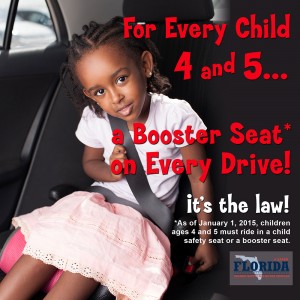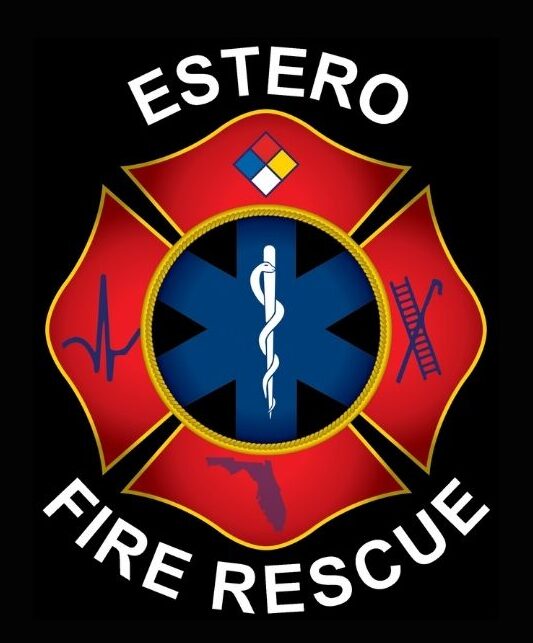Changes in Child Restraint Law (Booster Seats) FAQs, Facts & Figures
 What is changing about Florida’s Child Restraint Law?
What is changing about Florida’s Child Restraint Law?
Beginning January 1, 2015, children aged 4 and 5 must be secured in a crash-‐tested, federally approved child restraint device such as child safety seat or a booster seat. Previously, 4 and 5 year-‐olds could be restrained with just a seatbelt, but this is no longer the case; the seat belt must be used in conjunction with a booster seat.
Are there any exceptions to this requirement?
Yes, 4 and 5 year-‐olds can be secured with just a seatbelt if the child: 1) is being given a ride as a favor by someone who is not a member of their immediate family; 2) is being transported in a medical emergency; or, 3) has a medical condition documented by a health professional that necessitates an exception.
Do public transport vehicles have to provide car seats/booster seats?
No. It is the obligation and responsibility of the parent, guardian, or other person responsible for a child’s welfare to provide child restraint seats in motor vehicles hired for transporting persons in exchange for compensation (e.g., taxi, bus, limousine, motor coach, etc.).
Can a 3 year-‐old ride in a booster seat?
No. Children age 3 and under must be secured in a separate carrier (a car seat that is attached to the vehicle’s seat) or a vehicle manufacturer’s integrated child seat.
When will my child be ready for just a seatbelt?
Many children need booster seats even beyond the age of 5, depending on the size of the child and where the seatbelt crosses the body. The following recommendations can help you determine if your child is ready to wear a seatbelt without a booster seat:
- the child is at least 4’9” tall;
- the child can sit all the way back in the seat and bend knees at the edge of the seat;
- the shoulder belt lays across the chest, not the neck;
- the lap belt lays across the upper thighs, not the stomach.
Facts & Figures:
- Riding while improperly restrained is one of the reasons traffic accidents are the leading cause of death for American children ages 5 to 14. [NHTSA]
- Children ages 2 to 5 who use safety belts prematurely are four times more likely to suffer a serious head injury in a crash than those in child safety seats or booster seats. [Safekids.org]
- Booster seat use reduces the risk for serious injury by 45% for children aged 4–8 years when compared with seat belt use alone. [Centers for Disease Control and Prevention]
- In 2013, 5 children were killed and 150 injured in Florida traffic crashes as a result of improper or no child restraint use. As of 12/24/14, 5 children have been killed and 145 injured for the same reason in 2014. [Department of Highway Safety and Motor Vehicles]
See §316.613 (2014) Fla. Stat, for more information on Child Restraint Requirements.
To locate the nearest child car seat inspection station, visit:
www.safercar.gov/cpsApp/cps/map/findfitting.htm?q_State=FL&q_Zip .

